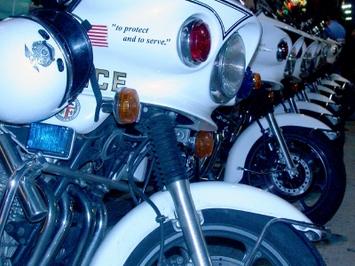
This is a story of heartbreak and hope – and neither end of the tale made the news.
A curious combination of factors recently led me to these events on a street in South Los Angeles, where worn houses and skinny palm trees can sometimes trick you into seeing nothing much.
Then a crumpled baby bottle near a truck’s tire caught my eye and kicked me in the gut.
The bottle belonged to a toddler who had just been crushed to death.
The mother lost track of the baby. The baby crawled behind the wheel of a neighbor’s truck. The neighbor didn’t notice the child there.
That’s how death came to this street, a place where African Americans and Latino Americans live side-by-side in a “Black-Brown” slice of the city – the sort of streetscape where so much of the potential and tension of our famed diversity resides.
The scene leaned toward tension for several reasons.
The mother of the baby was African-American.
The neighbor was Latino-American.
The mother was still in her teen years, and preliminary reports indicated that she had been having some trouble with the responsibilities that come with a baby.
It appeared that the neighbor – an immigrant – didn’t have a driver’s license.
It was hot and Santa Ana winds were blowing, sucking all the moisture out of the atmosphere, working the nerves.
African-American folks gathered on front walks, whispering among themselves. They peered toward the yellow tape that marked off the house down the block, where a distraught woman occasionally appeared on the porch.
There wasn’t a Latino-American neighbor in sight.
The tension hung there, deciding whether to shrink or grow.
The drone of the Harbor Freeway provided a monotonous soundtrack, seemingly ready to drive its tempo crazy or cool.
Hope didn’t follow on to the scene naturally, but it did arrive to stake a claim. The first foothold came with uniformed cops and plainclothes investigators of the Los Angeles Police Department (LAPD), who went about their grim duty quietly, efficiently, respectfully.
Authorities had transported the baby from the scene in hopes of some life-saving treatment. The mother of the child had gone along. Social service agencies had been notified. The sorry details of an autopsy and funeral arrangements would be handled from the hospital. The driver of the vehicle was in custody, also away from the scene.
Curiosity continued up the street, with neighbors now forming clusters, their whispers growing into not-quite-hushed tones. One group of youngsters started getting a bit louder.
That’s when hope went on the offensive, able to do so because word of this incident had already gone from the streets of South Los Angeles to the highest levels of LAPD.
A member of the agency’s command staff got there quickly. He received his briefing, took a measure of the situation, and headed back to his car. He stopped short of the vehicle, though, turning toward a group of five or six neighbors as they looked toward the scene. He approached them, ramrod straight, and asked if they knew what had just happened down the block on the street where they live.
No, they didn’t, they replied.
The high-ranking officer told them in clear, calm tones.
A collective gasp came from the neighbors. What a shame, they said, wondering aloud how such a thing could happen.
The gasp soon yielded to shaking heads. The tension eased toward sympathy.
I can tell you that the neighborhood could have gone either way until then. I know that LAPD’s work at this scene will go largely unnoticed in our workaday world. I can report that the beat cops and investigators presented themselves with a professionalism that held tension at bay. I saw the high-ranking officer make sure that clear, courteous communication on the street trumped skepticism.
The neighborhood stayed right-side-up in the face of the heartbreak at the end of the block. A baby died and folks felt the loss, leaving the Black-Brown dynamic out of the equation.
The whole thing was awful—but it could have been worse.
Things didn’t get worse, so none of this made the news.
I just happened to be there, and I thought you all should know.
Jerry Sullivan is the Editor & Publisher of the Los Angeles Garment & Citizen, a weekly community newspaper that covers Downtown Los Angeles and surrounding districts.












